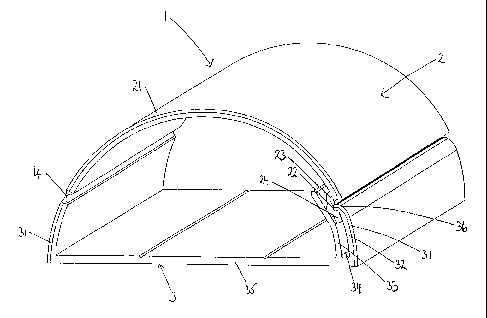Some of the information on this Web page has been provided by external sources. The Government of Canada is not responsible for the accuracy, reliability or currency of the information supplied by external sources. Users wishing to rely upon this information should consult directly with the source of the information. Content provided by external sources is not subject to official languages, privacy and accessibility requirements.
Any discrepancies in the text and image of the Claims and Abstract are due to differing posting times. Text of the Claims and Abstract are posted:
| (12) Patent: | (11) CA 2556355 |
|---|---|
| (54) English Title: | CONDUITS |
| (54) French Title: | CONDUITS |
| Status: | Granted and Issued |
| (51) International Patent Classification (IPC): |
|
|---|---|
| (72) Inventors : |
|
| (73) Owners : |
|
| (71) Applicants : |
|
| (74) Agent: | SMART & BIGGAR LP |
| (74) Associate agent: | |
| (45) Issued: | 2012-08-28 |
| (86) PCT Filing Date: | 2005-03-08 |
| (87) Open to Public Inspection: | 2005-09-15 |
| Examination requested: | 2010-01-14 |
| Availability of licence: | N/A |
| Dedicated to the Public: | N/A |
| (25) Language of filing: | English |
| Patent Cooperation Treaty (PCT): | Yes |
|---|---|
| (86) PCT Filing Number: | PCT/GB2005/000889 |
| (87) International Publication Number: | WO 2005086304 |
| (85) National Entry: | 2006-08-15 |
| (30) Application Priority Data: | ||||||
|---|---|---|---|---|---|---|
|
A conduit (1) having a substantially semi-circular outer cross-section
comprising a base portion (3) and a lid portion (2), the lid portion (2) being
attached to the base portion (3) by a hinge (4) and having a clip (23) on the
opposite side, wherein the hinge (4) is located at an angular elevation from
the base of between 10~ and 35~, the base portion (3) having a clip socket for
retaining the clip (23), wherein the clip socket comprises an outer wall (32),
which forms part of the semi-circular outer cross-section, and an inner wall
(33), between which is defined a channel (34) for the clip (23), the height of
the inner wall above the bottom of the base portion (3) being substantially
the same as the height of the hinge (4) above the bottom of the base portion
(3).
Cette invention se rapporte à un conduit (1) ayant une section transversale externe essentiellement semi-circulaire, comprenant une partie base (3) et une partie couvercle (2), laquelle est fixée à la partie base (3) par une charnière (4) et comporte une pince (23) sur le côté opposé. La charnière (4) est situé à une élévation angulaire de la base comprise entre 10· et 35·, la partie base (3) comportant une douille de pince destinée à retenir la pince (23). Cette douille de pince comprend une paroi externe (32), qui fait partie de la section transversale externe semi-circulaire, et une paroi interne (33), entre lesquelles est formé un canal (34) pour la pince (23), la hauteur de la paroi interne au-dessus du fond de la partie base (3) étant essentiellement identique à la hauteur de la charnière (4) au-dessus du fond de la partie base (3).
Note: Claims are shown in the official language in which they were submitted.
Note: Descriptions are shown in the official language in which they were submitted.

2024-08-01:As part of the Next Generation Patents (NGP) transition, the Canadian Patents Database (CPD) now contains a more detailed Event History, which replicates the Event Log of our new back-office solution.
Please note that "Inactive:" events refers to events no longer in use in our new back-office solution.
For a clearer understanding of the status of the application/patent presented on this page, the site Disclaimer , as well as the definitions for Patent , Event History , Maintenance Fee and Payment History should be consulted.
| Description | Date |
|---|---|
| Common Representative Appointed | 2019-10-30 |
| Common Representative Appointed | 2019-10-30 |
| Grant by Issuance | 2012-08-28 |
| Inactive: Cover page published | 2012-08-27 |
| Inactive: Final fee received | 2012-06-05 |
| Pre-grant | 2012-06-05 |
| Notice of Allowance is Issued | 2012-05-09 |
| Letter Sent | 2012-05-09 |
| Notice of Allowance is Issued | 2012-05-09 |
| Inactive: Approved for allowance (AFA) | 2012-04-30 |
| Amendment Received - Voluntary Amendment | 2011-08-29 |
| Inactive: S.30(2) Rules - Examiner requisition | 2011-04-11 |
| Letter Sent | 2010-02-09 |
| Request for Examination Requirements Determined Compliant | 2010-01-14 |
| All Requirements for Examination Determined Compliant | 2010-01-14 |
| Request for Examination Received | 2010-01-14 |
| Inactive: IPRP received | 2006-11-06 |
| Inactive: Cover page published | 2006-10-12 |
| Inactive: Notice - National entry - No RFE | 2006-10-06 |
| Letter Sent | 2006-10-06 |
| Application Received - PCT | 2006-09-15 |
| National Entry Requirements Determined Compliant | 2006-08-15 |
| Application Published (Open to Public Inspection) | 2005-09-15 |
There is no abandonment history.
The last payment was received on 2012-02-29
Note : If the full payment has not been received on or before the date indicated, a further fee may be required which may be one of the following
Please refer to the CIPO Patent Fees web page to see all current fee amounts.
Note: Records showing the ownership history in alphabetical order.
| Current Owners on Record |
|---|
| D-LINE (EUROPE) LIMITED |
| Past Owners on Record |
|---|
| PAUL DAVID RUDDICK |